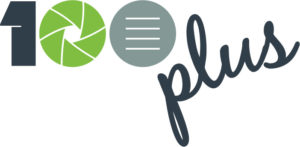When the pandemic prompted a pivot to “remote everything,” we looked to engineers to help businesses and schools make work and learning possible from anywhere.
Microsoft engineers answered the technical call by rapidly expanding their Teams collaboration platform to keep people connected and productive; it recently hit 115 million daily active users.
We talked with Microsoft Corporate Vice President Jeff Teper about how he’s leading his engineering team through rapid growth while remembering to have fun, celebrating their “hero moment” that delivered a cutting-edge virtual fan experience for the NBA, and furthering his relentless quest to give people better meetings.
– Tia Over, The Engineering 100

Editor’s note: this interview was edited for brevity and clarity
How has the Microsoft 365 engineering team managed this pandemic year? The Teams collaboration platform already had users who worked remotely, but then, all of a sudden, the whole world went remote.
There is a software side of this, a people side and a customer side. On the software side, we’ve been gearing up for this a while. We launched our cloud services back in 2008 and, in 2011, we gave it the name Office 365. So, we’ve had over a decade to make sure that our services were elastic, that our ability to onboard new users could handle spikes. Typically, the biggest spikes for us had been the start of the school year. And so, the foundations were there, but there was no model that looked quite like what happened. Teams, which is three years old, grew five-fold in users, and, in a 12-month period, 20 times in terms of meeting minutes. The theory of whether our services were elastic or not was definitely tested, and it proved out to be largely true. We had done really hard engineering work. We had built our storage on Azure Storage, our compute largely on Azure Compute, and we worked very closely with the Azure team and dozens of data centers around the world so that they could allocate more storage and cores to us. In a case where it’s almost working perfectly, you can swarm on the things that you needed extra help on. So, for example, one thing was our provisioning system where new users sign up for the service. During the shift to “remote everything” at the start of the pandemic, we had weeks where we had millions of new users. We hadn’t modeled for that. And so we had to add more queues to the architecture for adding new users to the system. We did that relatively quickly. That was the technical side to it.

A lifelong Beatles fan, Jeff Teper is on a mission to help people ‘Come Together’ through collaborative technology. (Photo courtesy of Microsoft)
The people side to it was, I sent a message to our team a couple days before Microsoft went home, to say, look, this is coming. We don’t know how long it’s going to take. We’ve got to get ready to make sure we know what it’s like to work in eight to 10 meetings back-to-back. And then, you know, people started to have family members and friends impacted directly [by COVID-19]. People with kids had to come up with new plans, as did people who were taking care of their parents or other or their people who were high risk. There was a lot of stress. And when you have big teams, you have everybody along the spectrum from people whose situations were okay and people who were really struggling. And because we’re not seeing each other face to face, you don’t really get that vibe like, “Oh, you’re not doing very well.” And so, I think there was a period of us setting what were our expectations of the team. How do we load balance work so that everybody doesn’t have to be a superhero? Who are the members of the team that need help and support? Microsoft has done a lot to try to make sure there are a lot of resources for people.
The last and most important was our working with customers. In addition to the Microsoft sales force, we have a customer engineering team in my organization that, in the first three months of the pandemic, talked to 930 customers. They were all along the spectrum – from people who had bet early on the cloud, who were thrilled and were looking like heroes, to people who are working at companies whose businesses were in serious danger. From customers in the travel or retail business to hospitals, to school systems, to schools who have teachers who may not be tech savvy, and they needed our help. That was the most important part of this: to ground us in why we’re doing what we’re doing. And that, like our own team, there are some people who need extra help, and we need to be there for them.
Is there a story you can share about a challenge that required you to think or operate outside of the box?
As we were seeing people in meetings all day long, we started to think, what can we do to make this better? We had a combination of members of our team and some folks in Microsoft Research, particularly a guy named Jaron Lanier, who invented virtual reality, said, “Hey, we do this in virtual reality. We don’t put people in little boxes, isolated, where they can’t high-five each other. We put them in the scene together.” And so we came up with this idea in April called Together mode and then we showed demos to a few customers, including the National Basketball Association. And they said, we’re going to put these 17-foot screens around the court in the bubble; what if each fan was in a Together mode scene? And so, this thing went from non-existent to a feature to being basically every night for months on TV. We were all really proud of the first game of the finals, where [former President] Barack Obama was sitting next to [former Los Angeles Laker] Shaquille O’Neal in Together mode, getting excited together about the game. I was so proud of the team. Months ago, we hadn’t had this feature. We dreamed it up, we built it, we shipped it. And we were operating without a net with millions of viewers watching around the world. That was exciting and gave the team a lot of energy. That’s probably our hero story.

The National Basketball Association used Microsoft Teams Together mode to deliver a virtual fan experience at the NBA Playoffs. (Photo courtesy of NBA)
How should engineers be thinking about the future of remote work?
There has always been a set of companies or situations where people were distributed. People who are in sales or service, would say, “What’s new? I’ve been a remote salesperson separate from headquarters for years.” But a lot of people in office work hadn’t gone through that and had benefited from physical proximity for esprit de corps and mentoring and clarity of communications. Now we’ve all got this lived experience at the other extreme, very distributed. Eventually we’re going to go this third way in the middle where we are going to have to have a new set of norms. For example, companies like Microsoft have said, okay, our employees have told us there are aspects [of remote work] that I like: I like the flexibility. It’s sometimes more productive at home. But I really miss my team and want to be with them together. And so we’ve said that many of our employees will be able to work remotely up to 50% of the time. We are figuring out what that means when you have some people in the office and some people remote and how the people remote for that particular meeting don’t feel like second class citizens in the meeting, and don’t get crowded out. There’s this set of things we’re going to have to figure out in a more hybrid model.
You hear a lot of big companies saying they’re going to move away from their big office spaces into more touchdown spaces. I think, collectively, we have a lot to learn there. The specific thing that I’m on a mission for is better meetings. I could give you a lot of sociology, psychology, brain chemistry, and we’ve got all that, but we just want to give people better meetings.
How do we help people have meetings that are the right length? Meetings that have an agenda and discipline on the time. Let’s agree we have to make a decision on X versus Y. We’re going to allocate the first 10 minutes to the background and the next 20 minutes to discussion. We’re going to tell the Teams app that, and Teams is going to be the time management cop in the meeting. We will encourage pre-reading. We have this feature we’re doing in Teams called Recap, where if you did go to Outlook or Teams, you’ll be able to see the video for the meeting the pre-read, the notes, the transcription will use AI to filter out what really you need to know. Say, if you were one of five people who missed the meeting, wouldn’t it be great if within two minutes you could skim the thing and say, “Ah, because of X, they decided Y. I agree with that.” My mission is to help people have more engaging and effective meetings by learning from our customers and using AI technology and UI design to steer people in the right direction.
Anything else?
We’re exposing a lot of extensibility in Teams, evolving it as a platform. For example, how we can help hospitals bring medical records systems into the Teams user experience so that when a doctor is consulting with a patient, they have all the information right there. Or in manufacturing, when engineers are troubleshooting an issue, they can have the engineering diagrams right there. A big focus for us is not rethinking work on our own, because we can’t – we’re not the experts in places like hospitals and schools. We know software development. So we want to partner with people who use Teams. We’re really excited at Microsoft to partner with lots of companies in lots of different industries to transform how things and people work together.
